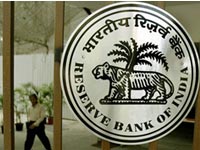Majority Indians don’t have bank accounts

Hyderabad,Nov 16: Believe it or not, two thirds of the country's population doesn't have a Bank account and this situation is not expected to change dramatically in the near future.The attempt by the present Governments is now rightly moving towards using alternate non-Banking channels to route financial services into the interiors of the country, says Wall Street Journal.As a part of this process it would be only appropriate if the domestic remittance market is opened to recognized money transfer agents who already are authorized to receive inward remittance from abroad.In fact,it is quite paradoxical that a person sitting in India can receive remittance from anywhere else in the world but not from other locations in India.
So, a person in London can remit money to a person sitting in a remote village in Bihar by using the services of Reserve Bank of India-approved, private money transfer players,while a person sitting in Mumbai cannot do the same.The only option open to him is to use the postal department's money order service and borrow in the meantime if necessary.The problems in India's rural sector are well documented and the lack of remittance services is but one of the many inequities that plague this part of the country and keep its inhabitants outside of mainstream finance.About 72 per cent of the country's 1.14 billion people live in rural areas, yet agriculture produces only about 21 per cent of the Gross Domestic Product (GDP), according to the World Bank.
That leaves the majority of the population living off a small chunk of the economic pie. While the Governments have claimed it can end poverty by 2040,at present more than 250 million Indians live on less than Rs 50 a day, says the article in the Wall Street Journal.Small and marginal farmers,with two hectares (five acres) of land or less, comprise three quarters of the nation's farming households but own less than one quarter of its farmland. In the underdeveloped States like Bihar,small and marginal farmers comprise about 96 per cent of those working the land, according to industry experts.




 Vishnu separated from Manchu's project !
Vishnu separated from Manchu's project !